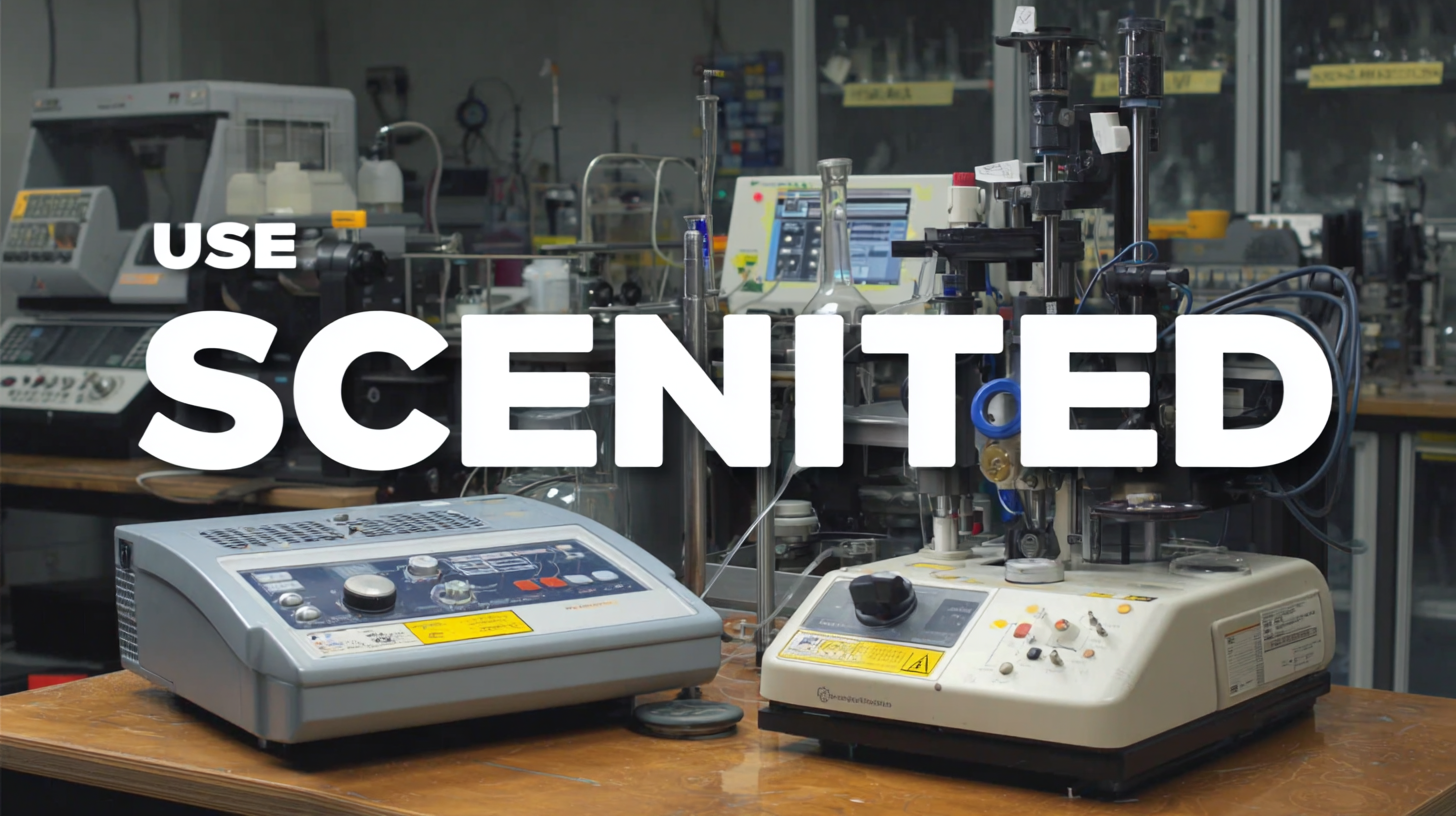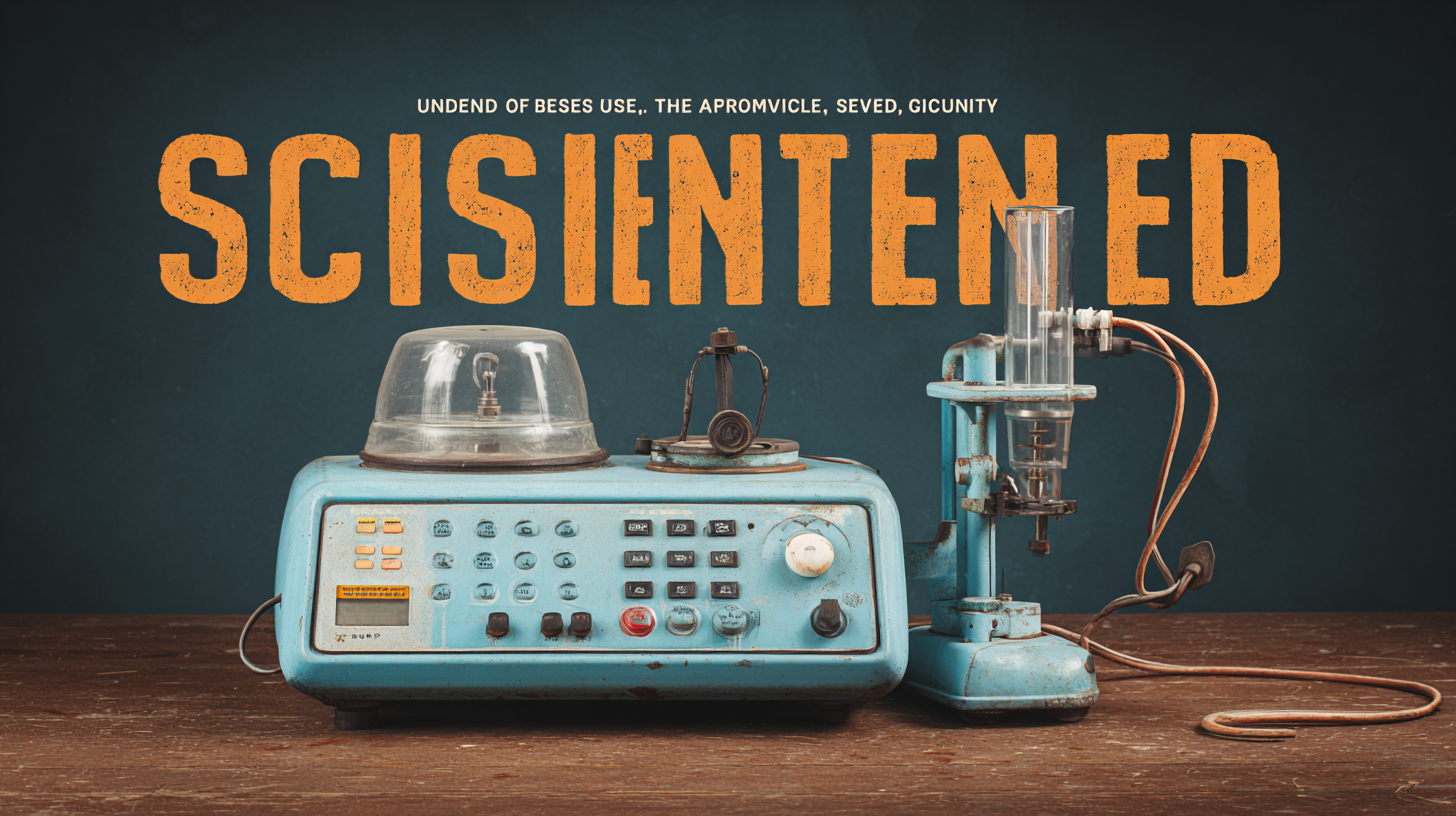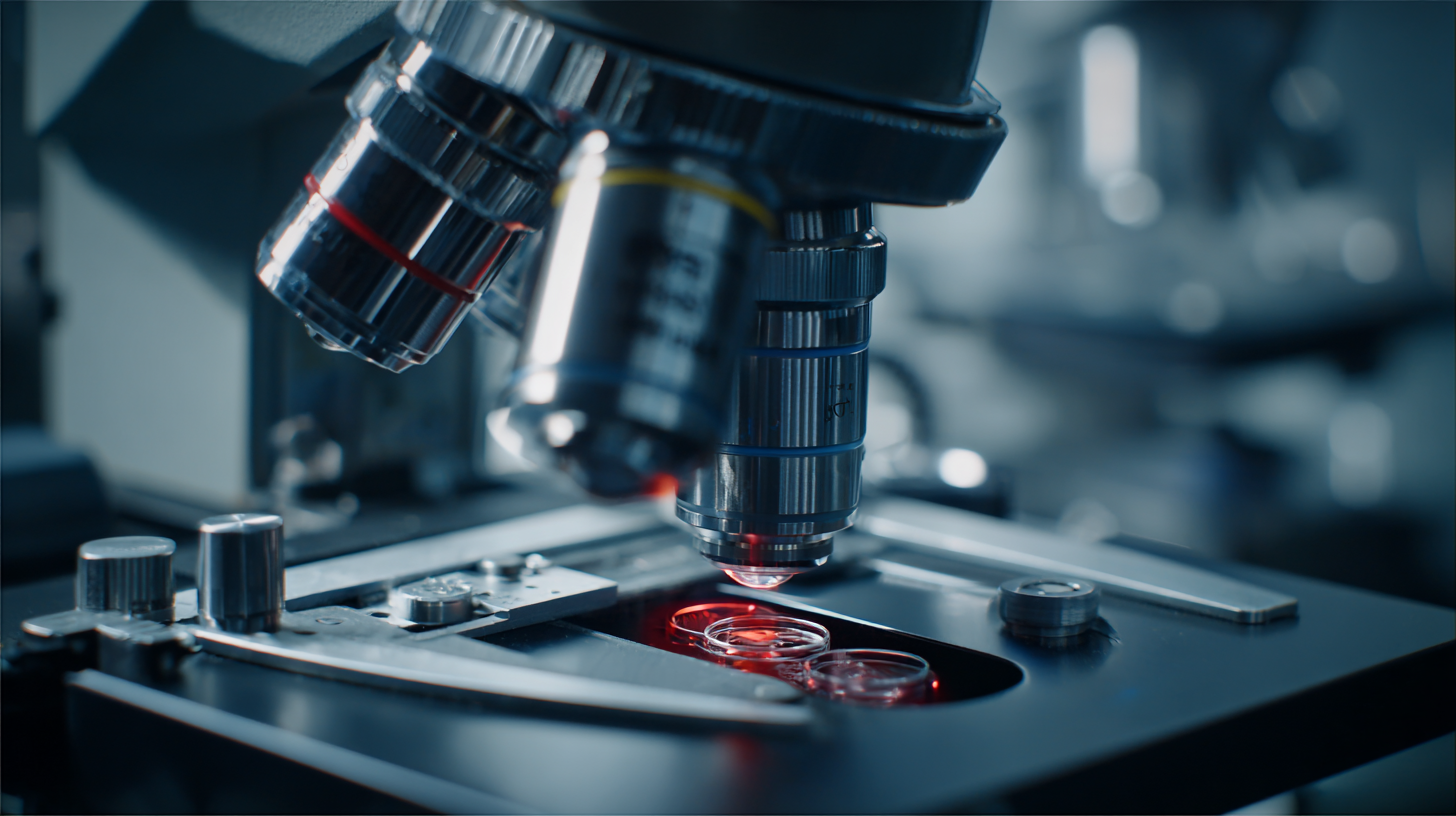

Understanding the Unique Features and Applications of the Best Used Scientific Equipment for Global Buyers
In recent years, the global market for used scientific equipment has witnessed significant growth, driven by budget-conscious institutions and startups seeking cost-effective solutions without compromising on quality. According to a report by Research and Markets, the global market for refurbished equipment is projected to reach USD 8.65 billion by 2027, emphasizing the shifting dynamics in laboratory procurement strategies. The demand for "Used Scientific Equipment" has surged as laboratories across various sectors, from pharmaceuticals to environmental science, recognize the value in leveraging high-quality, pre-owned tools that adhere to rigorous standards. Moreover, many Chinese manufacturers are seizing this opportunity, showcasing their strengths as robust factories that deliver reliable scientific instruments to a global audience. This blog will delve into the unique features and applications of the best-used scientific equipment available today, highlighting its significance for global buyers and the role of Chinese manufacturing in this evolving landscape.

Key Factors Driving Demand for Used Scientific Equipment in 2025
In 2025, the demand for used scientific equipment is expected to soar due to several driving factors that make it an attractive option for global buyers. One of the most significant influences is the growing emphasis on sustainability in scientific research and industry. Organizations are increasingly prioritizing eco-friendly practices, and opting for used equipment minimizes waste and reduces the carbon footprint associated with manufacturing new devices. This trend aligns with global efforts to promote sustainable development, making second-hand scientific equipment a smart choice for environmentally-conscious institutions.
Additionally, budget constraints faced by many research facilities and educational institutions are fueling the demand for used scientific equipment. With funding often limited, organizations are seeking cost-effective solutions without compromising on quality. Used equipment can provide access to advanced technologies at a fraction of the cost of new units, enabling researchers and educators to maximize their resources. Furthermore, the rapid advancements in scientific research mean that many pieces of equipment are still highly functional even after their initial use, ensuring that buyers receive reliable tools capable of supporting their projects.
Top Considerations for Global Buyers of Used Scientific Instruments
When looking to purchase used scientific instruments, global buyers must consider several key factors. First and foremost, understanding the condition and functionality of the equipment is crucial. Outdated lab equipment can lead to inefficiencies in educational settings, as students and assistants often face challenges when utilizing such tools during lab sessions. Therefore, assessing the operational history and previous maintenance of the instruments is essential to ensure they meet modern research standards.
Tip: Always request documentation regarding the equipment’s original specifications and any repairs or upgrades made over its lifespan. This can provide insight into its reliability and appropriateness for your intended use.
Another important consideration is the availability of replacement parts and support services. As new technologies emerge, older models may become obsolete, making it difficult to find compatible components. Buyers should verify the availability of these resources before making a purchase, as it may significantly affect the longevity and usability of the equipment.
Tip: Engage with current users of similar equipment to learn about their experiences regarding support and troubleshooting. This can offer valuable guidance when selecting the right scientific instruments for your needs.
Global Buyers' Considerations for Used Scientific Instruments
Evaluating Quality and Reliability of Pre-Owned Scientific Equipment
When considering the purchase of pre-owned scientific equipment, evaluating quality and reliability is paramount. According to a report by Market Research Future, the global market for used laboratory equipment is expected to grow by 7.2% annually, highlighting the increasing demand for cost-effective solutions without compromising performance. Prospective buyers should focus on equipment that has been refurbished or comes with a certification from reputable manufacturers, as this often ensures adherence to stringent quality standards.
Tips: Always request a detailed service history of the equipment to understand its usage and maintenance. Having access to previous reports and user feedback can provide valuable insights into the reliability of the product in a real-world setting.
Additionally, it’s crucial to assess the warranty options available for pre-owned equipment, as this can significantly impact long-term value. Research indicates that approximately 30% of used equipment fails within a year without adequate warranty coverage. Investing in equipment with robust post-purchase support can mitigate risks associated with functionality and uptime.
Tips: Evaluate the reputation of the supplier. Long-standing companies in the industry often have established protocols for testing and quality assurance, which can further enhance your confidence in the purchase.

Innovative Applications of Used Scientific Equipment Across Industries
Used scientific equipment plays a critical role in various industries, offering innovative solutions that cater to diverse applications. In laboratories, for instance, refurbished microscopes can be utilized for advanced research in biology, providing researchers with the necessary tools to explore cellular structures without the exorbitant costs associated with new models. Industries ranging from pharmaceuticals to environmental science increasingly adopt used equipment, reducing waste and promoting sustainable practices.

When considering the purchase of used scientific equipment, it's essential to do thorough research. Ensure that the equipment meets current safety and operational standards. Take advantage of vendor certifications and warranties, which can provide assurance of quality and reliability. Additionally, if possible, request a demonstration before buying to confirm that the equipment functions as expected.
Moreover, networking with industry professionals can offer valuable insights into the best practices for integrating used equipment into your operations. Join forums or attend trade shows focusing on scientific innovations, where you can exchange experiences and tips with other users. This approach not only enhances your understanding but also helps you make informed decisions about potential purchases for your organization.
Future Trends: Sustainability and Cost-Effectiveness in Scientific Equipment Market
As the scientific equipment market continues to evolve, sustainability and cost-effectiveness are emerging as critical trends shaping its future. With the growing emphasis on environmental responsibility, manufacturers are increasingly focusing on creating equipment that minimizes waste and energy consumption. This shift not only meets regulatory demands but also appeals to conscious consumers who prioritize eco-friendly practices. From energy-efficient laboratory instruments to recyclable materials, the move toward sustainability is redefining the way scientific equipment is produced and utilized.
Cost-effectiveness is also a key consideration for global buyers. In an academic landscape often plagued by budget constraints, institutions are seeking used or refurbished equipment that retains quality while reducing financial strain. The market for high-quality pre-owned instruments is expanding, allowing researchers and educators access to advanced technologies without the hefty price tag associated with new equipment. This combination of sustainability and affordability is set to impact purchasing decisions significantly, pushing buyers to seek solutions that align with their long-term goals of innovation and economic viability.
Understanding the Unique Features and Applications of the Best Used Scientific Equipment for Global Buyers
| Equipment Type | Unique Features | Applications | Sustainability Aspect | Cost-Effectiveness |
|---|---|---|---|---|
| Microscope | High resolution, advanced imaging | Biological research, materials science | Uses less power, reduces waste | Lower initial investment |
| Spectrophotometer | Multifunctional, wide range of wavelengths | Chemical analysis, quality control | Reduced chemical usage | Cost per analysis is low |
| Centrifuge | High-speed operation, energy efficient | Cell separation, sedimentation studies | Reduces resource consumption | Long lifespan reduces replacement costs |
| Chromatograph | High resolution, versatile methods | Pharmaceutical analysis, environmental testing | Minimizes waste generation | Efficient solvent use lowers costs |
| Fume Hood | Advanced filtration, energy-saving | Handling hazardous substances | Reduces chemical exposure | Decreases maintenance costs |





